Home>diy>Building & Construction>What Is Construction In Progress
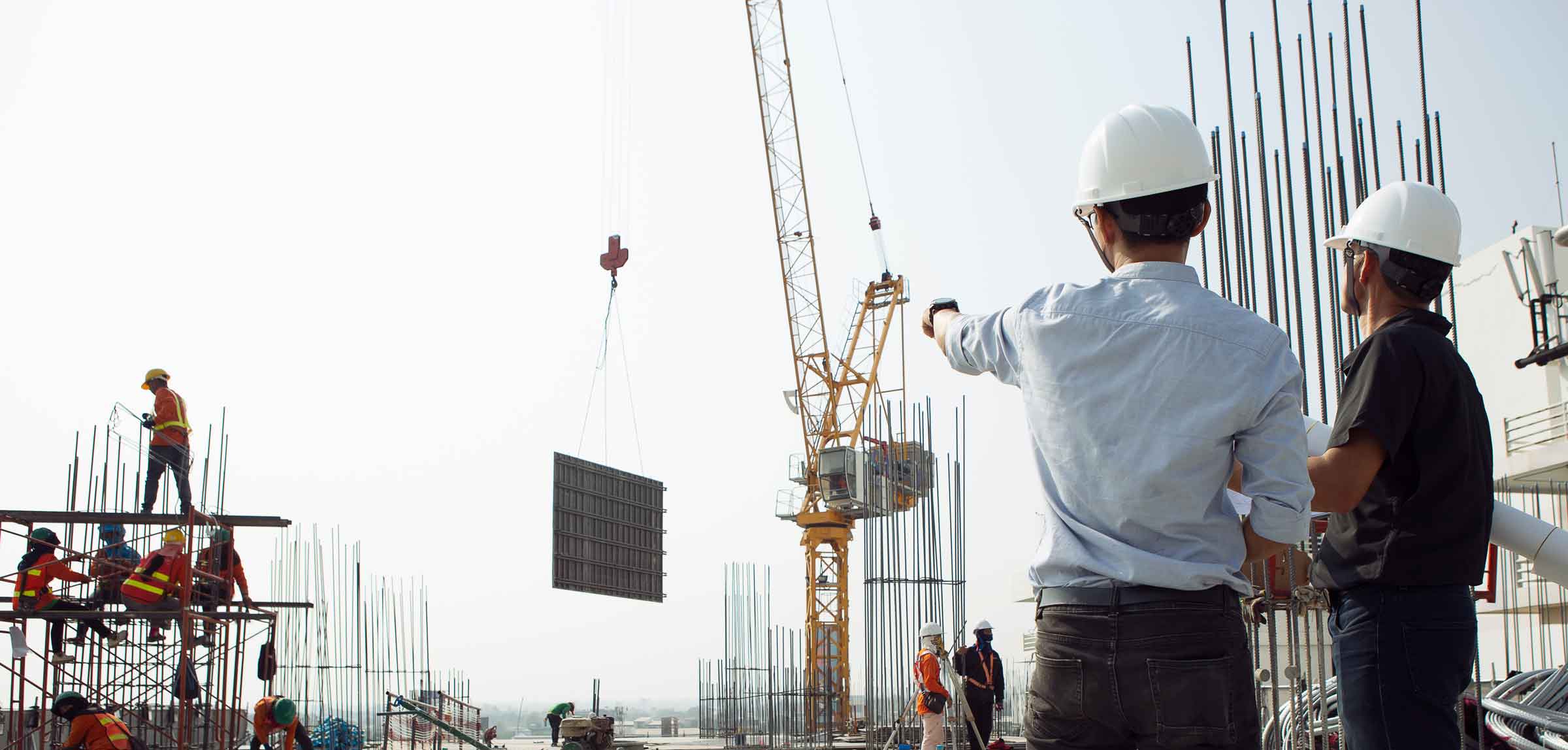

Building & Construction
What Is Construction In Progress
Modified: December 7, 2023
Discover what construction in progress entails and its significance in the field of building construction. Explore the process, challenges, and benefits of managing ongoing construction projects.
(Many of the links in this article redirect to a specific reviewed product. Your purchase of these products through affiliate links helps to generate commission for Storables.com, at no extra cost. Learn more)
Introduction
Construction in progress is a critical aspect of the building construction industry. It refers to ongoing construction work that is not yet completed or ready for use. This could include the construction of new buildings, renovation or expansion projects, or infrastructure development. Construction in progress plays a vital role in shaping the physical environment around us, from residential and commercial buildings to roads, bridges, and other public infrastructure.
Understanding the concept of construction in progress is essential for both industry professionals and those looking to invest in real estate or construction projects. In this article, we will explore the definition, purpose, accounting treatment, valuation, financial reporting, and monitoring of construction in progress. We will also discuss the challenges and risks associated with this aspect of the construction industry.
Key Takeaways:
- Construction in progress encompasses ongoing construction activities, from creating new infrastructure to renovating existing structures, driving economic growth, and shaping our built environment.
- Effective monitoring of construction in progress is crucial for assessing progress, managing costs, ensuring quality, and mitigating risks, ultimately leading to successful project completion.
Read more: How To Monitor Construction Work Progress
Definition of Construction in Progress
Construction in progress, also known as CIP or construction work in progress, refers to the ongoing construction activities on a project that have not been completed or are not yet ready for use. It encompasses all stages of construction, from initial planning and design to the actual construction work and final completion.
Construction in progress can include various types of projects, such as the construction of new buildings, the renovation or expansion of existing structures, or the development of infrastructure like roads, bridges, or utilities. It is a dynamic and ever-evolving process that requires careful planning, coordination, and execution to ensure successful project completion.
The scope of construction in progress can vary widely, depending on the nature and scale of the project. It can range from small residential renovations to large-scale commercial or public development ventures. Regardless of the size or complexity, the key characteristic of construction in progress is that the work is ongoing and not yet finished.
Construction in progress can involve multiple stakeholders, including architects, engineers, contractors, subcontractors, suppliers, and project owners. Each party plays a crucial role in the successful completion of the project, working together to meet the defined objectives and deliver the desired outcome.
Throughout the construction process, there may be various milestones and phases, from site preparation and foundation work to structural construction, interior finishing, and final inspections. Each stage requires meticulous planning, coordination, and monitoring to ensure compliance with regulations, quality standards, and project timelines.
It is important to note that construction in progress is distinct from completed construction projects. While completed projects are ready for use, construction in progress represents the ongoing work that still needs to be finished before the structure or infrastructure can be utilized.
Purpose of Construction in Progress
The purpose of construction in progress is to bring a construction project from its conceptual stage to its final completion and readiness for use. It serves several important purposes that contribute to the growth and development of the built environment:
1. Creation of New Infrastructure: Construction in progress allows for the creation of new infrastructure, such as buildings, roads, bridges, and utilities. These structures are essential for supporting economic activities, improving transportation, and enhancing the overall quality of life in a community.
2. Expansion and Renovation of Existing Structures: Construction in progress also encompasses the expansion or renovation of existing structures. This is vital for adapting to changing needs, updating outdated infrastructure, or increasing the capacity of buildings or facilities to meet growing demands.
3. Job Creation and Economic Growth: Construction projects create employment opportunities, both directly and indirectly, in various sectors of the economy. This includes jobs for engineers, architects, construction workers, suppliers, and other related industries. The construction industry also contributes to economic growth through the purchase of materials and equipment, generating revenue, and stimulating local businesses.
4. Improving Infrastructure and Services: Construction in progress plays a crucial role in improving infrastructure and services. This includes the construction of schools, hospitals, public transportation systems, utilities, and other essential facilities that enhance the overall well-being and quality of life for communities.
5. Catalyst for Development and Urbanization: Construction in progress is often a catalyst for development and urbanization. It attracts investment, promotes economic activity, and drives population growth in areas where construction projects are taking place. This, in turn, leads to the establishment of new businesses, improved services, and the overall development of the surrounding regions.
6. Preservation of Historic and Cultural Heritage: Construction in progress can also include the restoration and preservation of historic or culturally significant structures. This ensures that these important landmarks are preserved for future generations, contributing to the cultural identity and heritage of a community or nation.
The purpose of construction in progress is multidimensional, with a wide range of economic, social, and cultural benefits. It supports growth, development, and progress, creating a lasting impact on the built environment and the people who interact with it.
Key Features of Construction in Progress
Construction in progress entails several key features that distinguish it from other stages of the construction process. Understanding these features is essential for effectively managing construction projects and ensuring their successful completion. Here are some of the key features of construction in progress:
1. Active Construction Work: Construction in progress involves ongoing construction activities. It is characterized by the physical labor and efforts put into building or renovating structures, including excavation, foundation work, framing, electrical and plumbing installations, finishing, and other related tasks.
2. Evolving Nature: Construction in progress is dynamic in nature, progressing through different stages and milestones. It evolves over time, from the initial planning and design phase to the actual construction work, and finally to the completion and handover of the finished project.
3. Multiple Disciplines and Trades: Construction in progress requires coordination and collaboration among various disciplines and trades. Architects, engineers, contractors, subcontractors, suppliers, and other professionals work together to integrate their expertise and skills to achieve the desired project outcome.
4. Time-Bound Activity: Construction in progress is conducted within specific timelines and deadlines. Project schedules, milestones, and completion dates are established to ensure that the construction work is completed within the planned timeframe. Adhering to these time constraints is crucial for project success.
5. Continuous Planning and Monitoring: Construction in progress involves continuous planning and monitoring. Project plans are developed and adjusted as needed, taking into consideration factors such as resource allocation, progress tracking, risk management, and quality control. Regular monitoring ensures that the project stays on track and any issues or delays are addressed promptly.
6. Compliance with Regulations and Standards: Construction in progress must adhere to applicable building codes, regulations, and industry standards. Compliance ensures that the constructed structures are safe, functional, and in compliance with legal requirements. Inspections and certifications may be required at different stages to verify compliance.
7. Risk and Uncertainty: Construction in progress is not without risks and uncertainties. Challenges such as unforeseen site conditions, weather disruptions, supply chain issues, or budget constraints may arise. Managing and mitigating these risks is essential to minimize their impact on the construction project.
8. Collaboration and Communication: Construction in progress requires effective collaboration and communication among project stakeholders. Clear communication channels, regular meetings, and coordination are essential for resolving issues, making decisions, and ensuring that everyone is aligned with the project goals.
These key features of construction in progress shape the nature of the construction process and influence the strategies and approaches employed to manage and complete construction projects.
Accounting Treatment of Construction in Progress
The accounting treatment of construction in progress is crucial for accurately reflecting the financial position and performance of construction projects. It involves recognizing and measuring the costs incurred during the construction process and appropriately reporting them in financial statements. The accounting treatment of construction in progress typically follows the principles of accrual accounting. Here are the main aspects of the accounting treatment:
1. Capitalization of Direct Costs: Direct costs directly attributable to the construction project, such as materials, labor, and subcontractor expenses, are capitalized as part of the construction in progress. These costs are recorded as assets on the balance sheet and not immediately expensed.
2. Allocation of Indirect Costs: Indirect costs, which are not directly attributable to a specific construction project but still affect the overall construction activities, are allocated to construction in progress using an appropriate allocation basis. Examples of indirect costs include supervision, engineering, insurance, and other related expenses.
3. Recognition of Interest Costs: If a construction project involves borrowing funds to finance the construction, interest costs incurred during the construction period may be capitalized as part of the construction in progress. This is known as the capitalization of interest expense and is subject to specific criteria defined by accounting standards.
4. Progress Billing and Revenue Recognition: Construction projects often involve progress billings, where the project owner pays the contractor based on the completion stages of the project. Revenue recognition for construction in progress is typically based on the percentage of completion method (POC). Under this method, revenue is recognized proportionally to the extent of the project’s completion, using reliable measures such as costs incurred, surveys, or physical completion.
5. Impairment Assessment: Construction in progress is assessed for impairment when there is evidence to suggest that the value of the project may be impaired, such as significant changes in market conditions, budget overruns, or technological advancements. If impairment is identified, the construction in progress asset is written down to its recoverable amount.
6. Reporting in Financial Statements: Construction in progress is typically reported as a separate line item on the balance sheet under long-term assets. It is disclosed along with relevant information such as the nature of the construction project, the stage of completion, and any significant commitments or contingencies related to the project. In the income statement, revenue recognized and costs incurred for the construction project are reported separately.
Proper accounting treatment of construction in progress is essential for providing accurate and transparent financial information and ensuring compliance with accounting standards, such as the Generally Accepted Accounting Principles (GAAP) or International Financial Reporting Standards (IFRS). It allows stakeholders to assess the financial performance, profitability, and risk associated with construction projects.
Construction in Progress (CIP) refers to the costs of construction work that is still ongoing and not yet completed. It includes the costs of materials, labor, and overheads directly related to the construction project. These costs are capitalized and not expensed until the project is completed.
Read more: How To Calculate A Construction In Progress
Valuation of Construction in Progress
The valuation of construction in progress is the process of determining the monetary value of ongoing construction projects that are not yet completed or ready for use. This valuation is important for various purposes, including financial reporting, investment analysis, and project management. There are several approaches and factors to consider when valuing construction in progress:
1. Cost-Based Approaches: The most common approach to valuing construction in progress is the cost-based approach. This involves aggregating and capitalizing all direct and indirect costs incurred during the construction process. Direct costs include materials, labor, and subcontractor expenses, while indirect costs encompass supervision, engineering, insurance, and other related expenses.
2. Percentage of Completion: Another method used for valuing construction in progress is the percentage of completion method (POC). This approach calculates the value by estimating the degree of completion of the project based on reliable measures, such as costs incurred, physical completion, or surveys. The percentage of completion is then applied to the total project cost to determine the value of construction in progress.
3. Appraisal and Market-Based Approaches: In some cases, the valuation of construction in progress may involve appraisals or market-based approaches. This typically occurs when there is a need to establish the fair market value of the project for purposes such as financing, insurance, or sale. Appraisers consider factors such as the location, market demand, quality of construction, and comparable sales of similar properties to determine the value.
4. Time Value of Money: When valuing construction in progress, it is important to consider the time value of money. This recognizes that the value of money decreases over time due to factors such as inflation and opportunity costs. Therefore, it may be necessary to discount future cash flows or adjust the valuation based on the estimated completion time of the project.
5. Consideration of Contingencies: Construction projects often involve contingencies, such as potential changes in costs, delays, or unforeseen events. Valuation of construction in progress should account for these contingencies by applying appropriate risk factors or allowances to the estimated value. This helps mitigate the potential impact of uncertainties on the final project value.
6. Professional Expertise: Valuing construction in progress may require the expertise of professionals such as appraisers, quantity surveyors, or construction cost consultants. These specialists have the knowledge and experience to accurately assess the value based on industry standards and best practices.
It is essential to note that the valuation of construction in progress is subject to various considerations, complexities, and assumptions. The chosen valuation method should align with the purpose of the valuation and comply with relevant accounting standards or industry practices to ensure reliability and accuracy in the reporting of construction project values.
Financial Reporting and Disclosure of Construction in Progress
Financial reporting and disclosure of construction in progress is a critical aspect of providing transparent and accurate information about ongoing construction projects. Proper reporting and disclosure enable stakeholders to assess the financial position, progress, and risks associated with construction activities. Here are key considerations for financial reporting and disclosure of construction in progress:
1. Balance Sheet Presentation: Construction in progress is typically reported as a separate line item on the balance sheet under long-term assets. It is important to clearly distinguish it from completed construction projects and other asset categories to provide clarity to financial statement users.
2. Project Descriptions and Stages of Completion: Financial reports should include descriptions of each construction project, including information about the nature of the project, its purpose, and the stage of completion. This allows stakeholders to understand the progress and estimated timeline of each project.
3. Valuation and Measurement: The financial reporting of construction in progress should disclose the valuation approach and measurement basis used. This includes information about the cost-based approach, percentage of completion method, or any other relevant valuation techniques applied to determine the reported values.
4. Disclosure of Significant Commitments and Contingencies: Financial statements should disclose any significant commitments and contingencies related to construction in progress. This could include information about contractual obligations, pending claims or disputes, potential changes in costs or delays, or any other material risks that could impact the outcome of the projects.
5. Income Recognition: Revenue recognition for construction in progress should be disclosed in accordance with applicable accounting standards. Information about the percentage of completion method, including the criteria used to determine the degree of completion, should be provided. Any changes in estimates or adjustments made to previously recognized revenue should also be disclosed.
6. Financing and Capitalization of Interest: If construction projects are financed through borrowing, it is important to disclose the details of the financing arrangements, including the interest rates, repayment terms, and any specific covenants or conditions attached to the funding. Additionally, the capitalization of interest expenses during the construction period should be disclosed.
7. Management Discussion and Analysis (MD&A): MD&A sections in financial reports provide an opportunity to discuss significant aspects of construction projects, including the progress, challenges, and future plans. This allows management to provide a narrative overview of the construction activities and their potential impact on the financial performance and position of the company.
8. Compliance with Accounting Standards: Financial reporting and disclosure of construction in progress should adhere to applicable accounting standards, such as the Generally Accepted Accounting Principles (GAAP) or International Financial Reporting Standards (IFRS). Compliance ensures consistency, comparability, and transparency in financial reporting across different entities and jurisdictions.
Proper financial reporting and disclosure of construction in progress helps stakeholders make informed decisions, assess the financial health of construction projects, and manage potential risks. It provides transparency and accountability, ultimately increasing the reliability and trustworthiness of financial information related to ongoing construction activities.
Importance of Monitoring Construction in Progress
Monitoring construction in progress is essential for ensuring the successful completion of construction projects. It involves continuously assessing and tracking the progress, quality, costs, and schedule of ongoing construction activities. Here are key reasons highlighting the importance of monitoring construction in progress:
1. Assessing Project Progress: Monitoring construction in progress allows project stakeholders to assess the actual progress of the construction project in comparison to the planned timeline. This provides valuable insights into the pace of work, identifies areas of potential delay, and enables timely corrective actions to keep the project on track.
2. Cost Control and Budget Management: By monitoring construction in progress, project managers can closely track and control costs throughout the construction process. This includes monitoring expenses related to materials, labor, equipment, and subcontractors. Early identification of cost overruns or deviations from the budget allows for prompt corrective measures to avoid financial risks.
3. Quality Assurance and Compliance: Monitoring construction in progress ensures compliance with quality standards and regulatory requirements. Regular inspections and quality checks help identify any defects, deviations, or non-compliance issues at an early stage. This enables timely rectification and ensures the delivery of a high-quality finished product.
4. Risk Identification and Mitigation: Monitoring construction in progress helps identify potential risks and challenges associated with the project. It allows for proactive risk management by implementing mitigation strategies to minimize the impact of risks such as safety hazards, environmental issues, or supply chain disruptions. Early identification of risks can prevent delays, cost overruns, and potential legal or reputational issues.
5. Stakeholder Communication and Coordination: Effective monitoring of construction in progress facilitates regular communication and coordination among project stakeholders. This includes contractors, subcontractors, suppliers, consultants, and the project owner. Clear and transparent communication channels help address issues, resolve conflicts, and maintain alignment between all parties involved in the project.
6. Timely Decision Making: Timely and accurate monitoring of construction in progress provides project managers with the necessary information to make informed decisions. This includes decisions related to resource allocation, schedule adjustments, change orders, or scope modifications. By having real-time data, project managers can make decisions promptly, minimizing potential delays and maximizing project efficiency.
7. Project Documentation and Records: Regular monitoring of construction in progress ensures proper documentation and record-keeping throughout the construction process. This includes maintaining records of progress reports, inspection and testing results, change orders, and other important project documentation. Clear and organized records facilitate transparency, audits, and legal compliance.
8. Client Satisfaction: Monitoring construction in progress helps ensure client satisfaction by delivering projects on time, within budget, and with the expected quality standards. Regular updates and progress reports keep stakeholders informed and create a sense of confidence in the project’s progress and outcome.
Overall, monitoring construction in progress is crucial for project success. It enables effective project management, cost control, quality assurance, risk mitigation, and stakeholder coordination. By actively monitoring construction activities, project managers can proactively address challenges, minimize risks, and ensure the timely and successful completion of construction projects.
Challenges and Risks Associated with Construction in Progress
Construction in progress involves various challenges and risks that can impact the successful completion of construction projects. Being aware of these challenges and actively managing the associated risks is essential for project managers and stakeholders. Here are some common challenges and risks associated with construction in progress:
1. Budget Overruns: Construction projects are susceptible to cost overruns due to factors such as changes in material prices, scope changes, unforeseen site conditions, or inadequate initial budgeting. Poor cost control and estimation can lead to financial strains and difficulties in completing the project within the allocated budget.
2. Schedule Delays: Construction in progress is often affected by schedule delays caused by factors like poor project planning, weather conditions, regulatory approvals, labor shortages, or unforeseen technical challenges. Delays can result in additional costs, contractual disputes, and reputational damage.
3. Design Changes and Coordination: Construction projects may face challenges related to design changes, coordination issues, and conflicts between different disciplines or stakeholders. Miscommunication or late design modifications can lead to inefficiencies, rework, and potential delays.
4. Health and Safety Hazards: Construction sites can pose significant health and safety risks to workers and project stakeholders. Failure to implement appropriate safety measures, inadequate training, or negligence can result in accidents, injuries, and legal liabilities.
5. Quality Assurance and Defects: Ensuring quality in construction in progress is essential for the long-term durability and functionality of the completed project. Poor workmanship, inadequate quality control, or the use of substandard materials can lead to defects, warranty claims, and customer dissatisfaction.
6. Supply Chain Disruptions: Construction projects rely on a complex network of suppliers, subcontractors, and vendors. Any disruptions in the supply chain, such as material shortages, logistical issues, or contractor failures, can cause delays, cost escalations, and project setbacks.
7. Environmental and Regulatory Compliance: Construction in progress must adhere to environmental regulations and obtain necessary permits and approvals. Failure to comply can result in costly fines, legal actions, project delays, and damage to the reputation of the project owner or developer.
8. Technological Advancements and Innovations: The construction industry is constantly evolving with the introduction of new technologies, materials, and construction methods. Keeping up with these advancements and successfully implementing them in construction in progress requires adapting to change, investing in training, and managing potential risks associated with unfamiliar technologies.
9. Financial and Market Volatility: Construction projects can be affected by economic fluctuations, interest rates, and market volatility. Uncertain market conditions, changes in government policies, or financial instability can impact project funding, investor confidence, and demand for completed projects.
10. Legal and Contractual Risks: Construction contracts encompass a wide range of legal obligations, including contract disputes, change orders, warranty claims, and liability issues. Failure to manage legal and contractual risks can result in costly litigation, damaged relationships, and project delays.
By recognizing and proactively addressing these challenges and risks, construction project stakeholders can optimize project outcomes, minimize potential disruptions, and ensure the successful completion of construction in progress.
Read more: How To Record Construction In Progress
Conclusion
Construction in progress plays a vital role in shaping our built environment and driving economic growth and development. It encompasses ongoing construction activities, ranging from the creation of new infrastructure to the expansion or renovation of existing structures. Understanding the key aspects of construction in progress, such as its definition, purpose, accounting treatment, valuation, financial reporting, and monitoring, is crucial for industry professionals and stakeholders alike.
Effective monitoring of construction in progress allows project managers to assess progress, manage costs, ensure quality, and mitigate risks. It enables timely decision-making, promotes coordination among stakeholders, and enhances communication. By monitoring construction in progress, project managers can proactively address challenges and maintain project timelines and budgets, ultimately leading to successful project completion.
However, construction in progress also presents challenges and risks that must be carefully managed. Budget overruns, schedule delays, coordination issues, health and safety hazards, quality assurance, supply chain disruptions, and compliance with regulations are among the many challenges faced. Being aware of these challenges and actively addressing them through effective project management techniques, strategic planning, and risk mitigation measures is essential for successful construction in progress.
Transparency and accurate financial reporting of construction in progress are critical for stakeholders to assess the financial position, progress, and risks associated with construction projects. Proper disclosure of information, including project descriptions, valuation methods, progress reports, and commitments, helps stakeholders make informed decisions and ensures compliance with accounting standards and regulations.
In conclusion, construction in progress is a dynamic and essential part of the building construction industry. By understanding its intricacies, actively monitoring progress, managing risks, and ensuring transparent financial reporting, we can maximize the potential for successful construction projects that contribute to the growth and development of our built environment.
Frequently Asked Questions about What Is Construction In Progress
Was this page helpful?
At Storables.com, we guarantee accurate and reliable information. Our content, validated by Expert Board Contributors, is crafted following stringent Editorial Policies. We're committed to providing you with well-researched, expert-backed insights for all your informational needs.








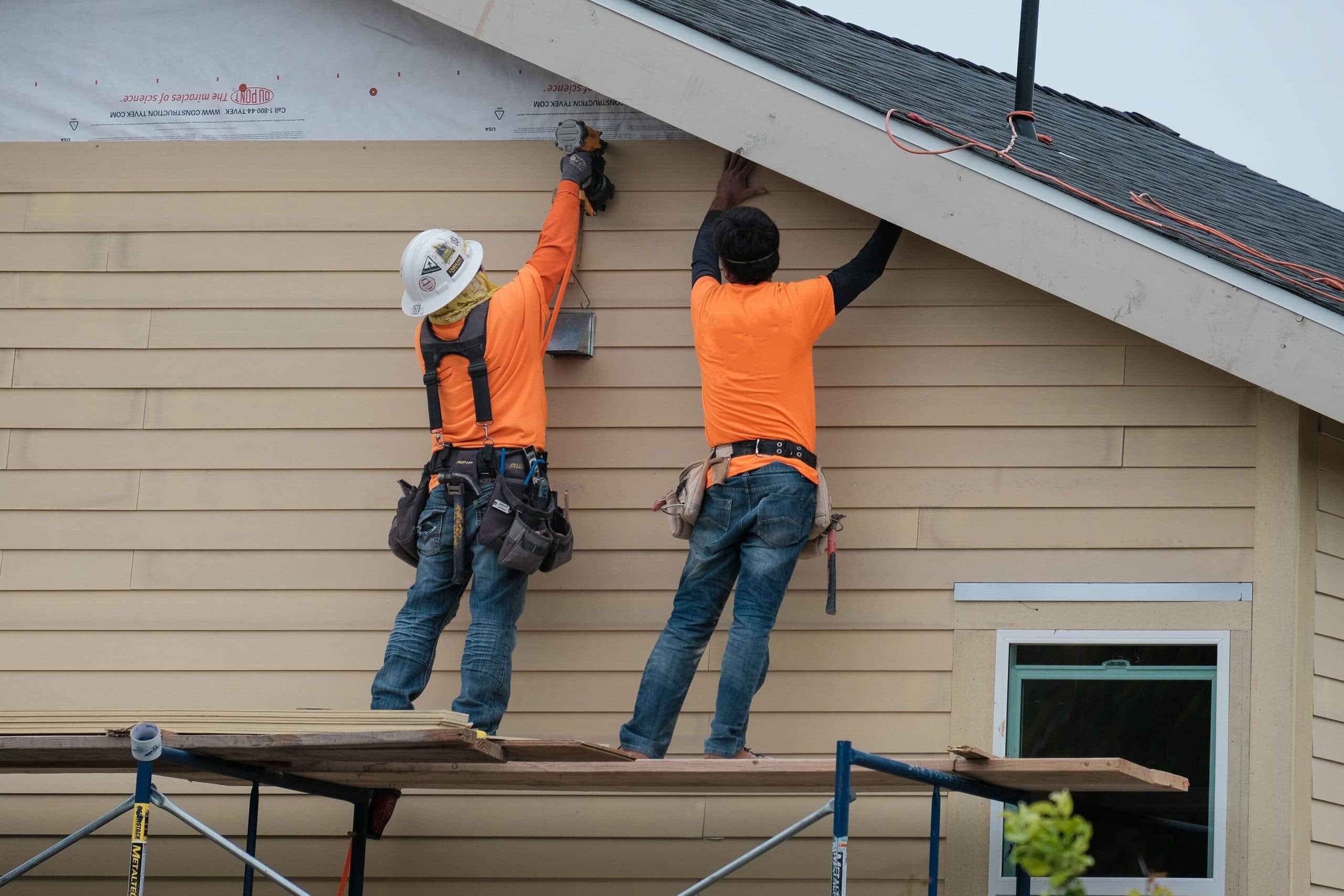
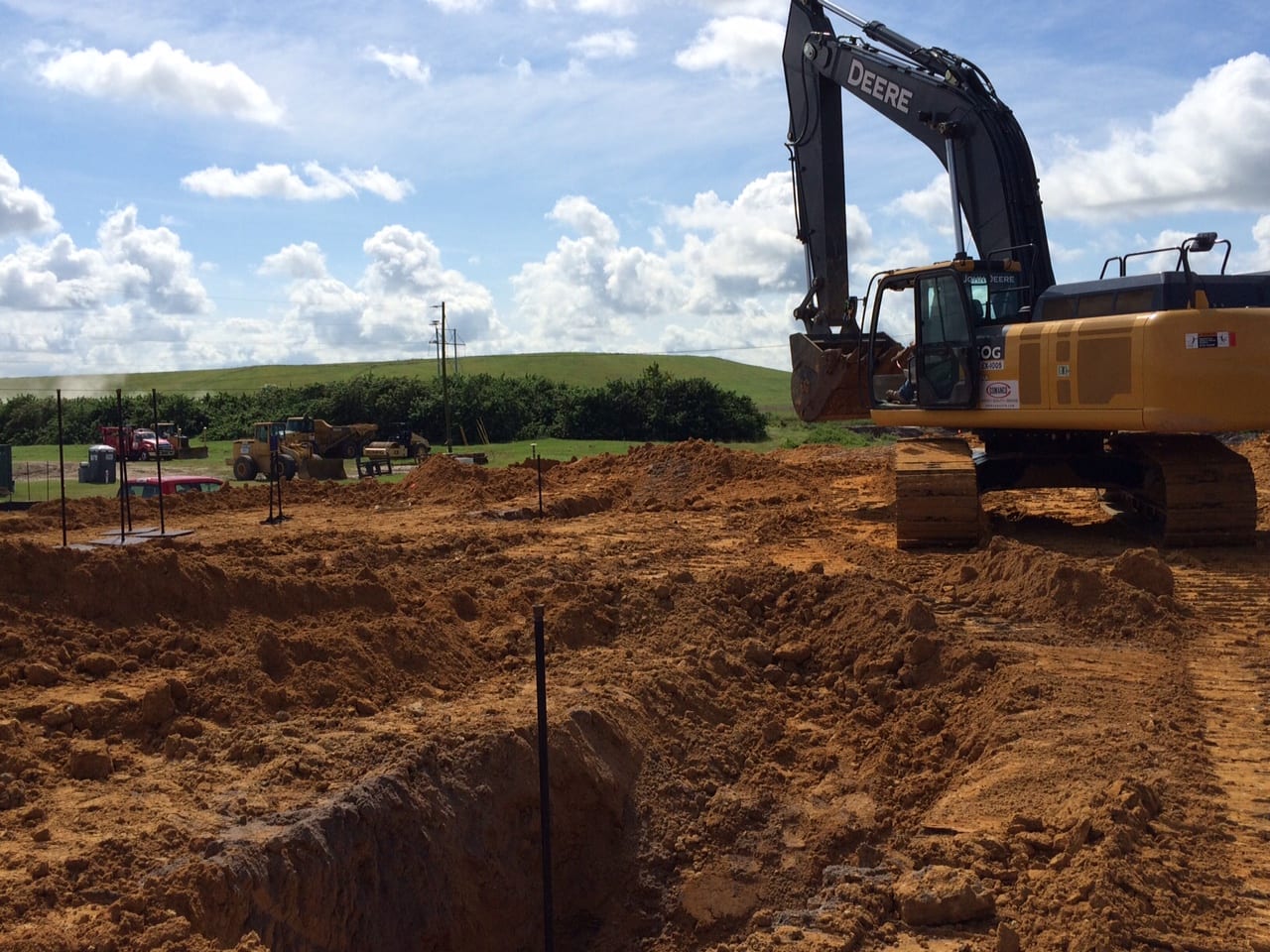
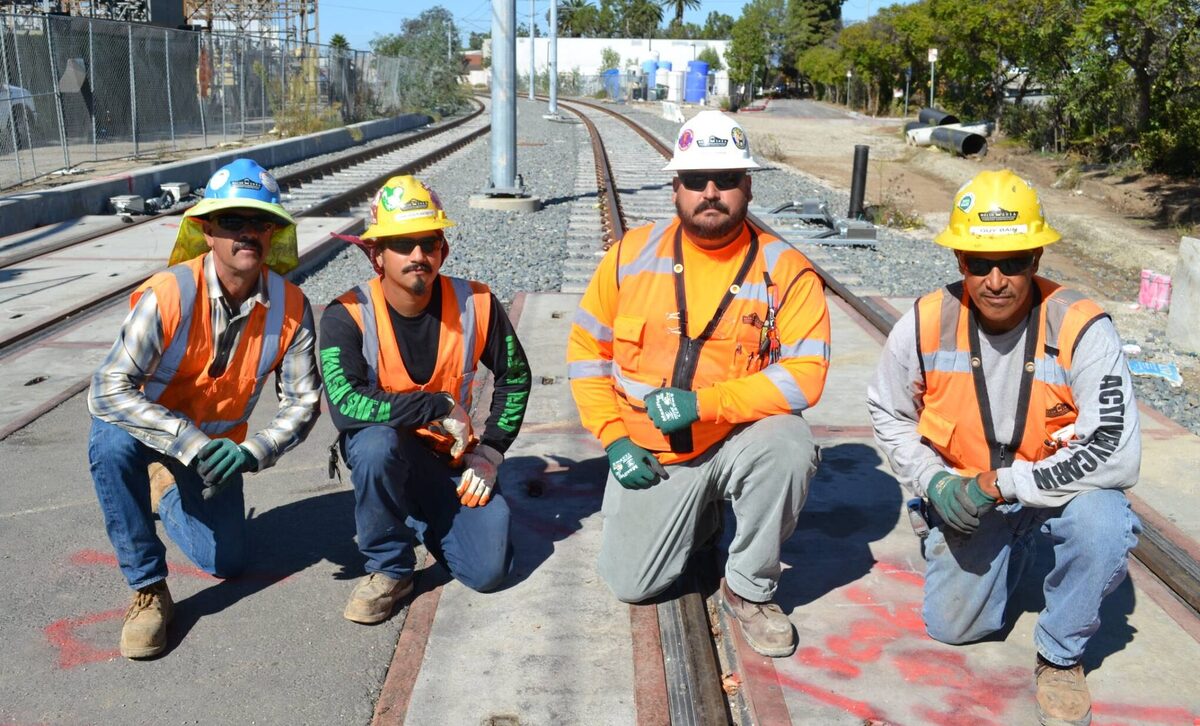
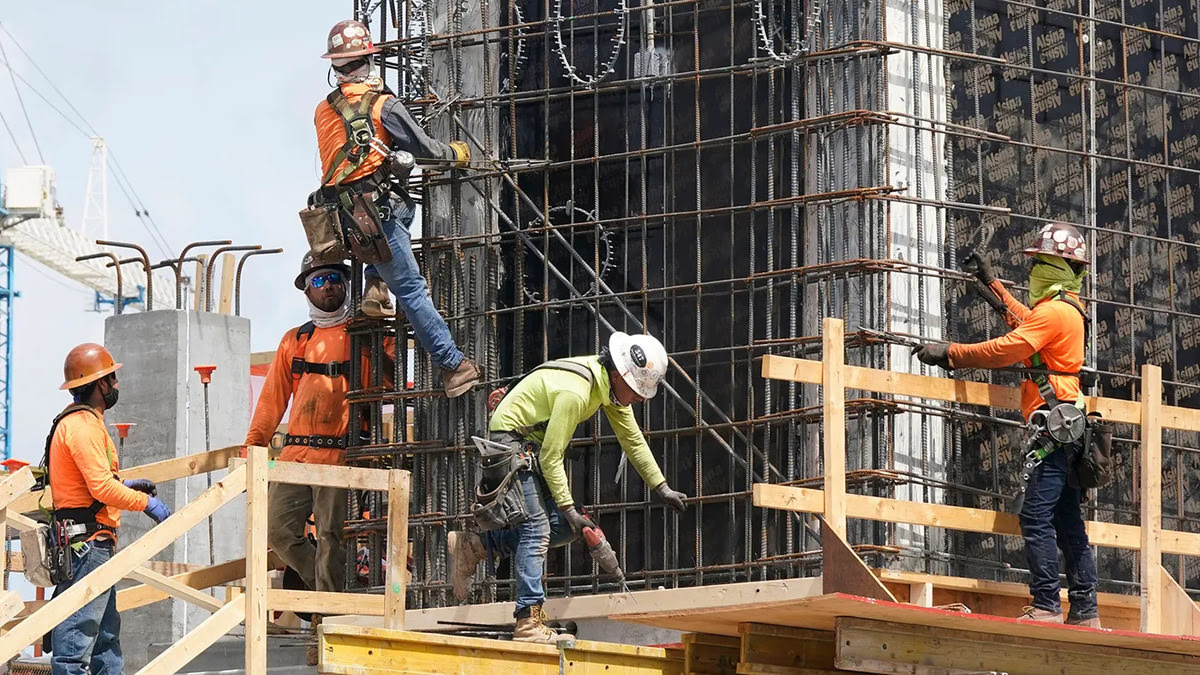
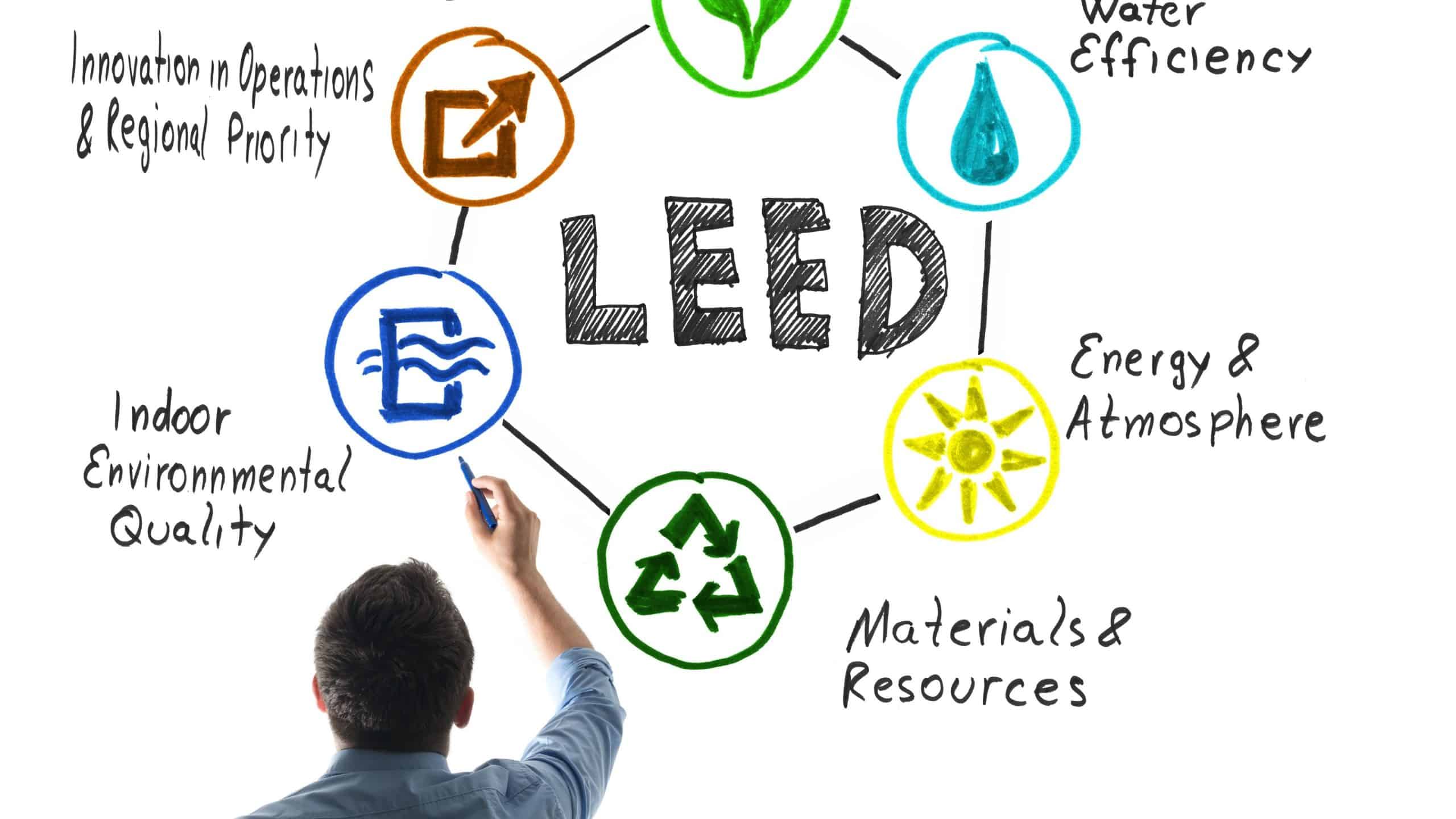

0 thoughts on “What Is Construction In Progress”